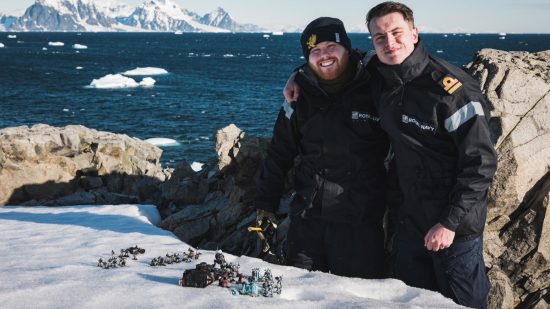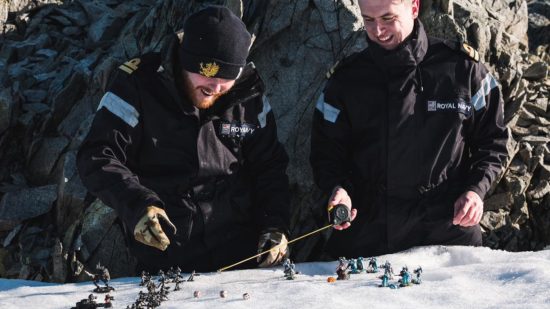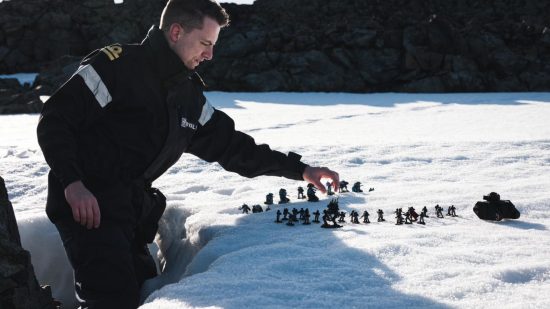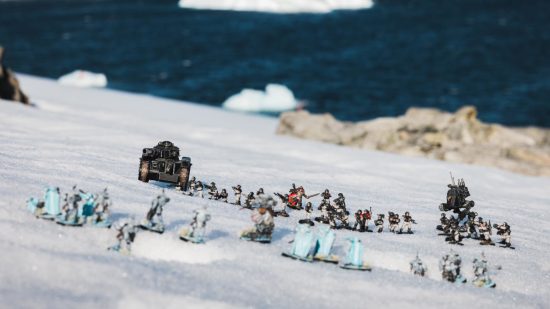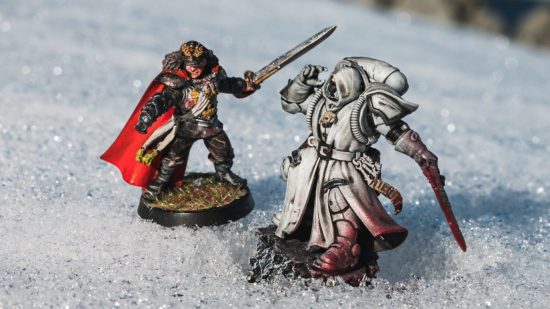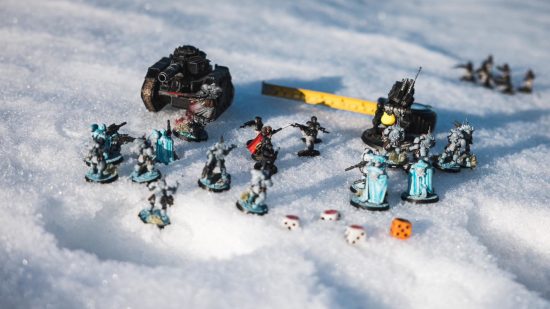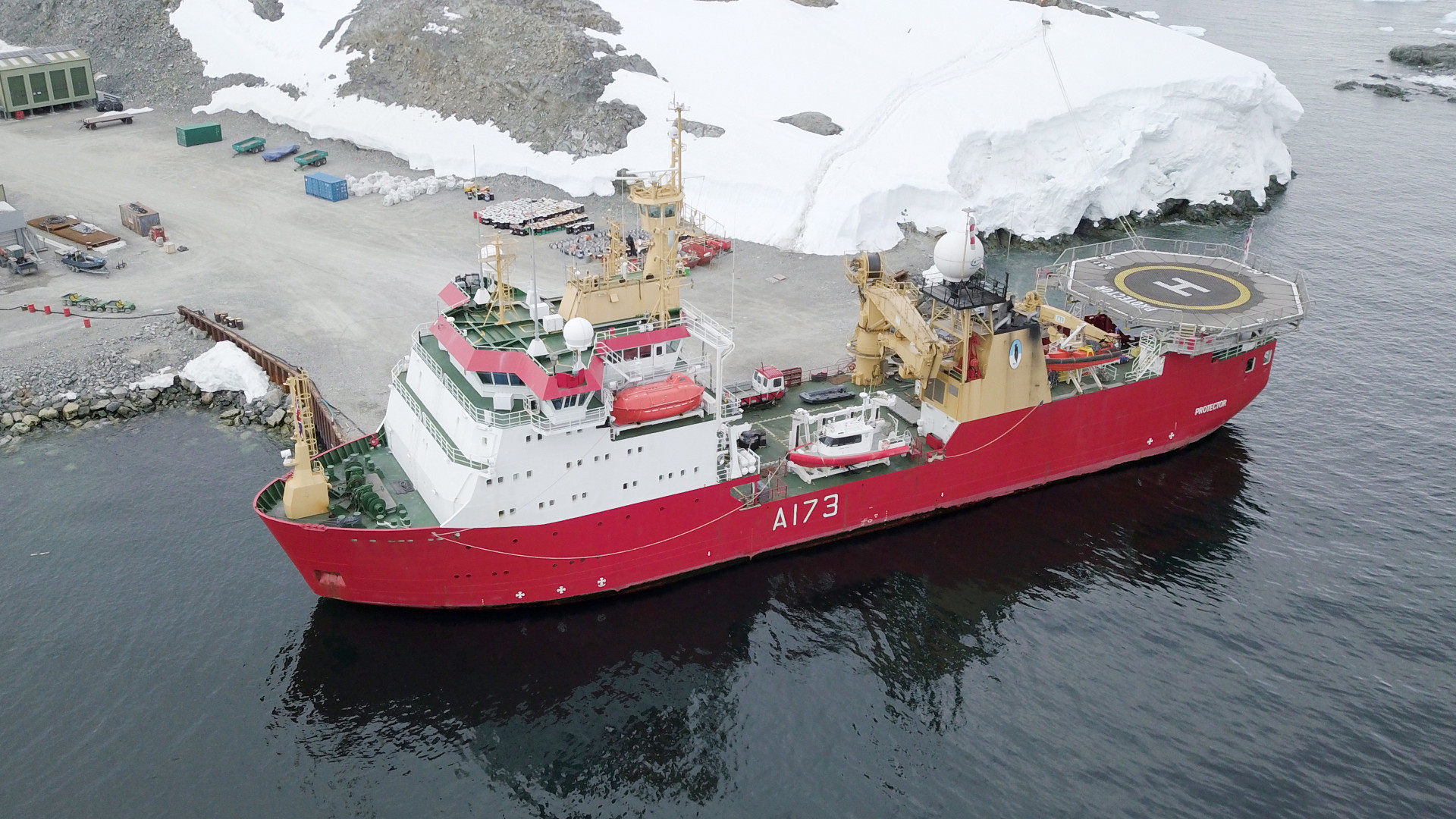After the Royal Navy twitter account for HMS Protector posted photos of a Warhammer 40k game played in the Antarctic on February 5, Lieutenant Jonny Talbot has told us more about that game and what it’s like to roll dice aboard ship. Talbot tells us he co-founded the UK competitive Warhammer 40k team the ‘Savvy Submariners’ – and they have an impressive track record.
According to the competitive rankings for International Tournament Circuit (ITC) teams, maintained by Frontline Gaming, the Submariners are currently the fifth ranked team in the UK and 16th globally, out of 5543. Talbot has been playing since 2015, and says he’s been “venturing more into the competitive scene, attending tournaments” ever since.
His opponent for the Antarctic Warhammer 40k throwdown was Lieutenant Max Friswell, who “began collecting Warhammer in 2005 and has held a keen interest in the lore and hobby aspects ever since”. Talbot adds that Friswell only recently learnt “rules for this edition of 40k, he is rekindling his romance for the game.”
Talbot says the game we saw in the frosty photographs, which took place at the Rothera Antarctic research base, was a real squeaker:
“A very close match saw my Arctic-themed Rift Stalkers (successor chapter to Raven Guard) nip the Imperial Guard on points. The vanguard deployment and pregame movement proved too much for the Imperial Guard to recover from, despite the overwhelming damage output.”
This isn’t the only match between the duo, who “average about a game a week” between their Space Marines and Astra Militarum Warhammer 40k factions. Talbot says that they usually play on the ship – obviously they don’t have the luxury of a dedicated gaming table, but they do “have a conference room with a table that is perfect to roll out a game whenever possible”.
Talbot says there were a few challenges for the game at Rothera: “The winds and snow can make games difficult, blowing models over and making charges more and more difficult”, but adds “with a little bit of additional effort the reward of playing in such a scenic environment is definitely worth it.”
Talbot says he only brought painted models on this expedition, but says that he will be painting miniatures on future Antarctic tours. He adds that Warhammer 40k has a positive impact on mental health:
“Both myself and Max are watchkeepers, this means that we both drive the ship for eight hours a day alongside our usual workload. This can lead to working days of between 14 – 16 hours long, Warhammer is a really great way for us to unwind and decompress. Connectivity, as I’m sure you have already experienced, can be a real issue so having a game which requires no internet is a real advantage to us.”
Warhammer 40k is popular among military service-people. There’s a long history connecting wargames and armed services: the original miniature wargame Kriegspiel was adopted by the Prussian officer corps as a training tool in the 19th century, and was the foundation for simulation wargames used for military preparation. Early commercial war board games were inspired by those professional tools.
We have a list of the best naval games if you fancy testing your tactical acumen in a world of watery conflict.
